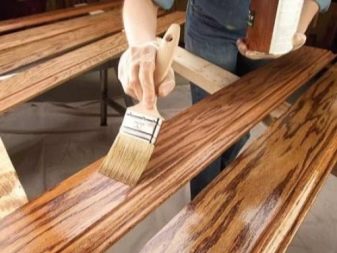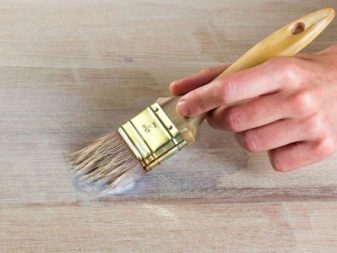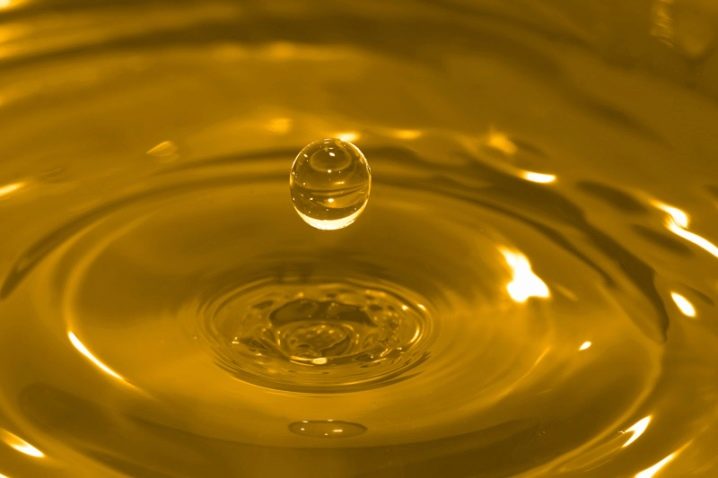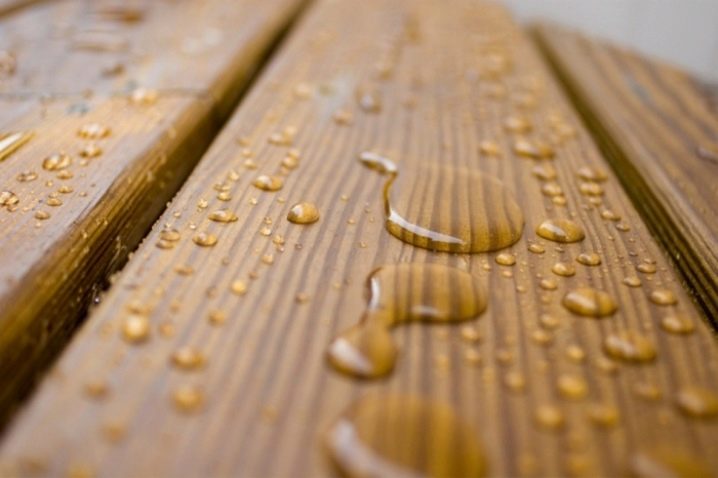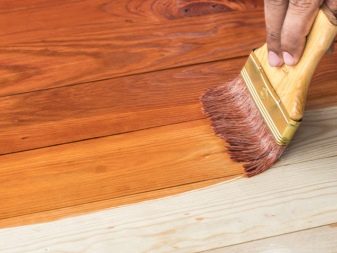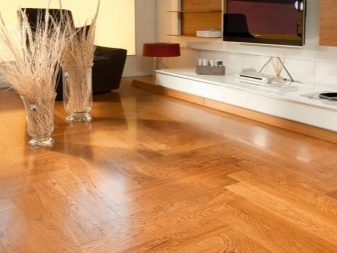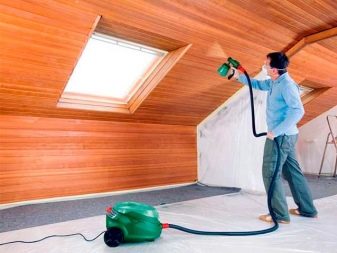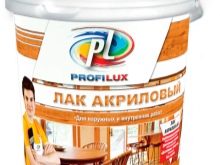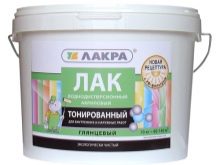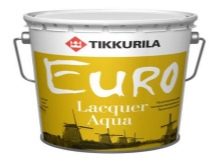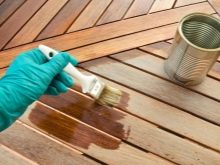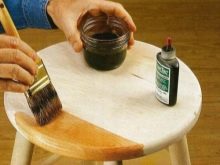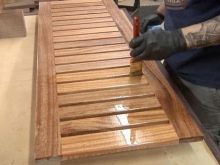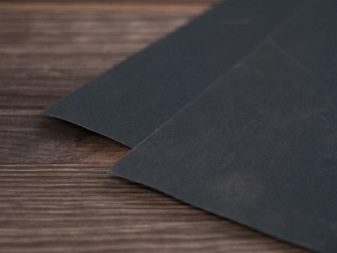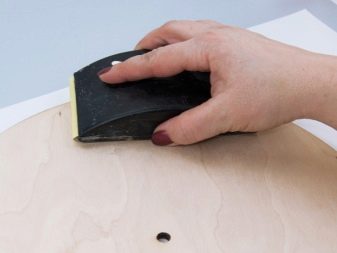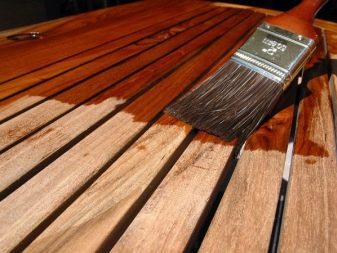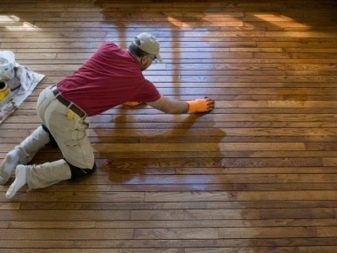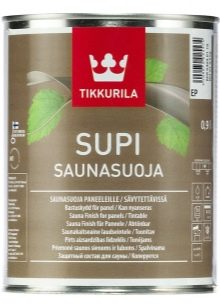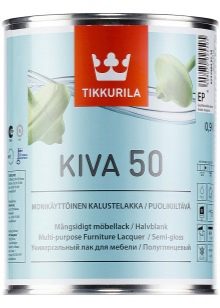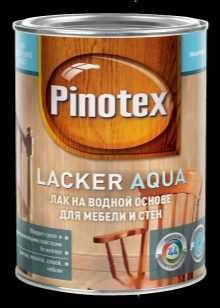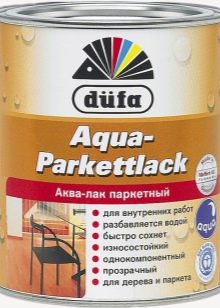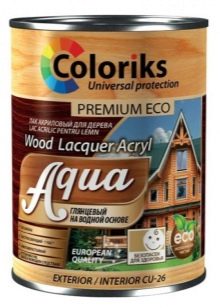Water-based acrylic lacquer: features and benefits
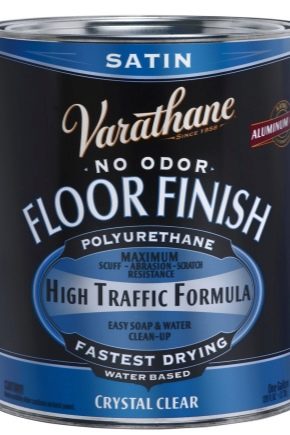
Water-based acrylic lacquer has appeared not so long ago, but at the same time it is becoming more and more popular among buyers. Polyacrylic paintwork material owes its popularity to a large number of advantages. This article discusses the features and advantages of such coatings, as well as the nuances of their use.
What it is?
Acrylic lacquer manufacturers use the special properties of resins. Such paintwork materials are made on the basis of a plastic dispersion that is completely soluble in a liquid.After hardening of the varnish, the base is protected by a film that is distinguished by high strength. This coating is very resistant to various external influences.
Consumers quickly appreciated the unique properties of such paints. They are used for various purposes, for example, to create various adhesive compositions and building mixtures.
Composition
Water-based acrylic lacquer is perfect if you want to emphasize a beautiful wood pattern and ensure its protection. Such paints consist of different components.
In the production of such coatings are used:
- plasticizer (it is this component that ensures the resistance of the coating to various mechanical effects);
- antiseptic;
- acrylic dispersion (liquid polymer).
Specifications
Such varnish is completely transparent, it has no color, its consistency is uniform. This material can be dissolved in water, ethers, ethanol, diethyl solution.
Physico-chemical characteristics of such a material:
- the composition is viscous;
- does not have an unpleasant smell;
- the coating dries out when water evaporates, after which a shiny film appears on the substrate, which is distinguished by its colorlessness and transparency;
- the coating is very elastic;
When the paint material becomes completely dry, it loses its ability to dissolve in water;
- when exposed to UV radiation does not begin to turn yellow over time;
- adheres well to the bases (in those cases when there is no dust and dirt on the surface);
- dries pretty quickly;
- completely ready for use;
- can be mixed with any coloring compositions that dissolve in water;
- when applied, such varnish can be either pasty or liquid (the film in any case will turn out to be elastic and durable);
- when applying the material to the base, you can use not only standard tools (brushes, rollers), but also very convenient aerosols to use: the materials in the cans are sprayed on the bases as quickly and easily as possible, therefore many choose today spray;
- similar coatings can be applied on brick surfaces, stone foundations;
- if necessary, this material can be diluted with water.
The main advantages
The advantages of acrylic lacquer are many.
You can highlight the most significant benefits for consumers:
- fire safety;
- esthetics;
- antiseptic properties (coating protects the base from the effects of microorganisms, mold);
- environmental friendliness, safety for human health;
- small weight;
- fluid resistance, thermal conductivity;
- resistance to temperature extremes.
Kinds
Acrylic varnishes differ from each other in composition. The material can be created on the basis of organic solvents or water-dispersion. The latter is more environmentally friendly, it is great for carrying out repairs indoors.
Similar materials are:
- two-component (polyurethane and acryl - a group of substances that acts as a binder);
- single component (binder is only acrylic).
Such coatings differ in appearance. The film can be:
- glossy (this film is very shiny);
- matte (coating gives the surface velvety);
- semi-matt.
Acrylic lacquer in any case very well underlines the natural beauty of the wooden surface, regardless of its type. There are pores in the wood where this material penetrates.
Use in construction and repair
Since acrylic lacquer is unique, versatile, it is very often used in construction and in the implementation of repair work.Specialists who know about the features of various paints and varnishes often choose not paint, but colorless varnish - such a coating can make the surface even more aesthetic.
Most often, these coatings are chosen during the construction of country houses and wood decoration. In the first case, this coating does not change the color of the natural surface - it emphasizes its beauty. Acrylic varnish dries quickly, so it is very well suited for outdoor work.
In the second case, such a lacquer reliably protects the tree and looks great on such surfaces. It can be used on chairs, countertops, walls, cabinets, stools, and so on.
Parquet flooring is quite popular.
Foundation preparation
If you want to spend as little material as possible and get the most even surface, apply a primer to the base before using the varnish. It is recommended to stop the choice on tinted impregnation or a special water primer.
To obtain a “mirror” coating, before using a primer, moisten the substrate with water and sand it.This method is called "wet grinding". To achieve the best results, treat each varnish coat (except finishing) with fine sandpaper.
When choosing a suitable coating, consider whether there are many based on irregularities. Gloss only highlight all defects. If you want to hide them, stop the choice on matt varnish.
Acrylic varnish is quite suitable for renovation of bases on which there is already a layer of old paint. It will be necessary to pretreat the surface with paint, using a fine-grained sandpaper for this. Then you need to wash off the pollution with soap solution.
Application features
Remember that only water is suitable for diluting these materials. Do not mix acrylic varnish with linseed oil, organic solvents. In order not to spoil the natural structure of the wooden surface, use liquid for dilution by 10%, not more.
If the varnish is tinted, and after opening the can you notice that the shades are different, do not worry - this is absolutely normal. To achieve uniformity, evenly distribute the tone, mix the material thoroughly before use.
When applying such materials moisture should not be too low. Otherwise, the coating will dry out too quickly, and defects may appear on it. The surface should not be greasy.
When using tinted material, make sure that the layer thickness is the same everywhere. If in some place the coating is too thick, the shade will be quite dark. It is better to apply to the surface not one thick layer of varnish, but several thin ones. So you can achieve maximum homogeneity.
When applying the material to a surface that has a non-uniform color (which was previously painted), you need to make sure that after applying a new topcoat, there is no longer any heterogeneity. To avoid problems, clean the old paint, using the skin, and apply to the cleaned tree is already a new coloring composition. There is another way to hide the unevenness of the surface color: a darker lacquer can be used.
Before applying tinted varnish, it is recommended to apply a material that does not have color (another varnish or impregnation) on the surface. So you can improve the absorbing properties of wood.
Famous manufacturers
Water-based acrylic lacquers today are offered by a variety of manufacturers, but the most popular ones can be identified.
Many consumers prefer products Tikkurila. Materials from this manufacturer can be used for exterior and interior. They effectively level the surfaces, make them more aesthetic, provide reliable protection, have antiseptic properties.
Lucky from the company "Tex" are universal. They are designed to perform decorative and protective functions.
Manufacturer Pinotex offers materials that are used for processing furniture, baseboards, doors, dishes made of wood, walls, windows. They also protect the bases and make them very beautiful.
Products from the company Lacra it can be applied to implementation of external and internal works. Such varnishes make surfaces shiny, protect them from negative mechanical, atmospheric effects.
Materials from Eurotex suitable for chipboard, fiberboard, old and new surfaces of wood, plywood. They provide protection of wooden bases against temperature drops, precipitation, various microorganisms.
On the floor covering with acrylic water-based varnish, see the following video.
